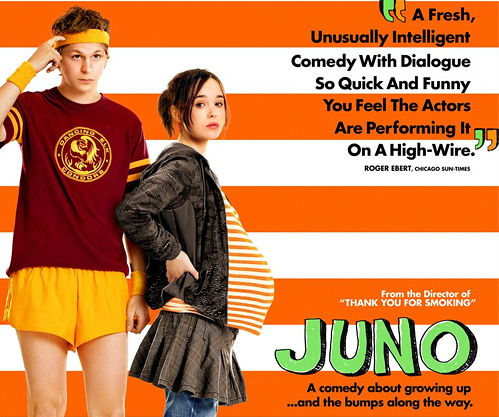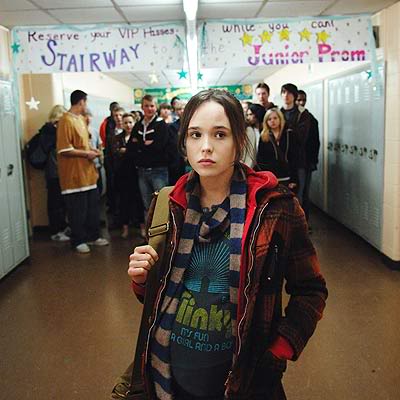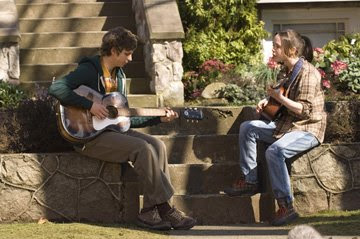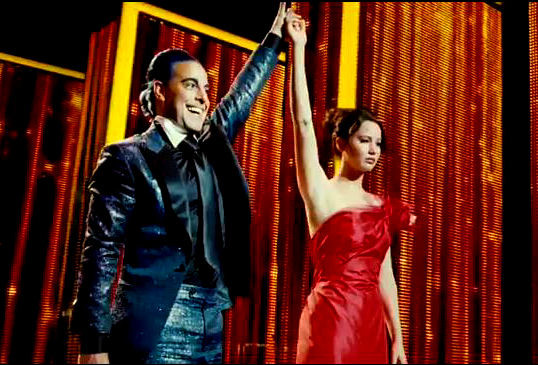 |
| Cierra Ramirez (Ansiedad) and Eva Mendes (Grace) in Girl in Progress |
 |
| Cierra Ramirez and Raini Rodriguez |
 |
| Eva Mendes and Cierra Ramirez |
The radical notion that women like good movies
 |
| Cierra Ramirez (Ansiedad) and Eva Mendes (Grace) in Girl in Progress |
 |
| Cierra Ramirez and Raini Rodriguez |
 |
| Eva Mendes and Cierra Ramirez |
 |
| Juno |
Anti-choice activist Jill Stanek declares Juno “the movie pro-aborts will hate,” describing the film’s scene at the abortion “mill” as “hysterical” and the protestor outside the clinic as a “friendly” student with whom Juno engages in “civil conversation.”
In contrast, there are those who argue that by virtue of the film being about Juno’s decision, it is inherently in favor of choice. Pro-choice writer Emily Douglas writes that she enjoys the way Juno normalizes teen sexual activity and, while still describing it as a “suburban fairy tale,” also suggests that “It’s a film for the people who love the many imperfect ways families take shape and people grow up.” Even Ellen Page, the actress who played the title character, proclaimed her own pro-choice credentials: “I don’t want white dudes in an office being able to make laws on things like this.”
There are other issues, of course. Sociologist Arthur Shostak neatly summarizes the movie’s many shortcomings from a pro-choice perspective: an empty parking lot at the clinic, a single, non-threatening protestor outside, an unprofessional over-sharer for a receptionist. Additionally, I have previously written about the many problems I see with Juno’s depiction of adoption. When Juno asks for an “old-school, closed adoption” and the potential adoptive parents readily agree, no one is recognizing the fact that openness in adoption has long-term benefits for not only birth parents, but also adoptees and adoptive families; when Juno rides her bike off into the sunset, she is indeed perpetuating the anti-choice fairy tale that adoption is without grief or long-term consequence of any kind.
The scene at the abortion clinic is an unequivocal disaster; the adoption story is messy and unrealistic; the happy ending is too easy, too over simplistic, too sweet for our sassy heroine.
So why, as feminists, do so many of us love this film in spite of all that?
I view the film as seeing the world through Juno’s eyes. It’s a cartoonesque version of reality, where people talk a bit like Juno and not quite like they do in real life, where characters are parodies and caricatures of stock types, and where there’s a teenager’s desire for what’s right and wrong to be obvious in a messy situation.
 |
| Juno at the abortion clinic |
Because, in many ways, Juno is a heroine for choice. Her independence is impressive – she doesn’t consult her parents until she’s already made her choice, decided against abortion, found adoptive parents, and arranged a time to meet with them. She makes the plans on her own and then tells them she’s looking for their support (which she receives) but not their permission. For a young woman, that’s exceptionally self-aware and downright empowered.
 |
| Juno in high school |
 |
| Juno and Paulie |
———-
Gretchen Sisson is a sociologist and writer whose work focuses on reproductive justice broadly and teen pregnancy, young parenthood, adoption, abortion, birth, and infertility specifically. You can find her on Twitter @gesisson.
 |
| Jennifer Lawrence as Katniss Everdeen in The Hunger Games |
Guest post written by Molly McCaffrey. Originally published at I Will Not Diet. Cross-posted with permission.
***SPOILER ALERT: Though there are no real spoilers here, one scene and the basic premise of the film are discussed in detail. If you’ve seen the preview for The Hunger Games, reading this review won’t reveal anything new, but if you haven’t seen the preview, I’d suggest you skip the part I’ve marked below.***
Possibly the most important moment in the film adaptation of The Hunger Games occurs when protagonist Katniss Everdeen (played with a perfect cross of vulnerability and strength by Kentucky native Jennifer Lawrence) confesses to her stylist Cinna (the circumspect Lenny Kravitz who aptly conveys the enormity of Katniss’ situation with his searing eyes) that she’s not very good at making people like her.
Katniss isn’t just nervous because she’s about to appear on national television or enter an arena in which only one person will come out alive; she’s also apprehensive because she knows that one of the ways a “tribute” — meaning a player in the Games — can get ahead is by making the people of the capital fall in love with her since they are allowed to sponsor tributes in the Games and send them gifts—medicine, water, weapons, anything — to help them win. So if she doesn’t make them like her, she could be sacrificing her own life in the process.
 |
| Stanley Tucci as Caesar Flickerman and Jennifer Lawrence as Katniss Everdeen in The Hunger Games |